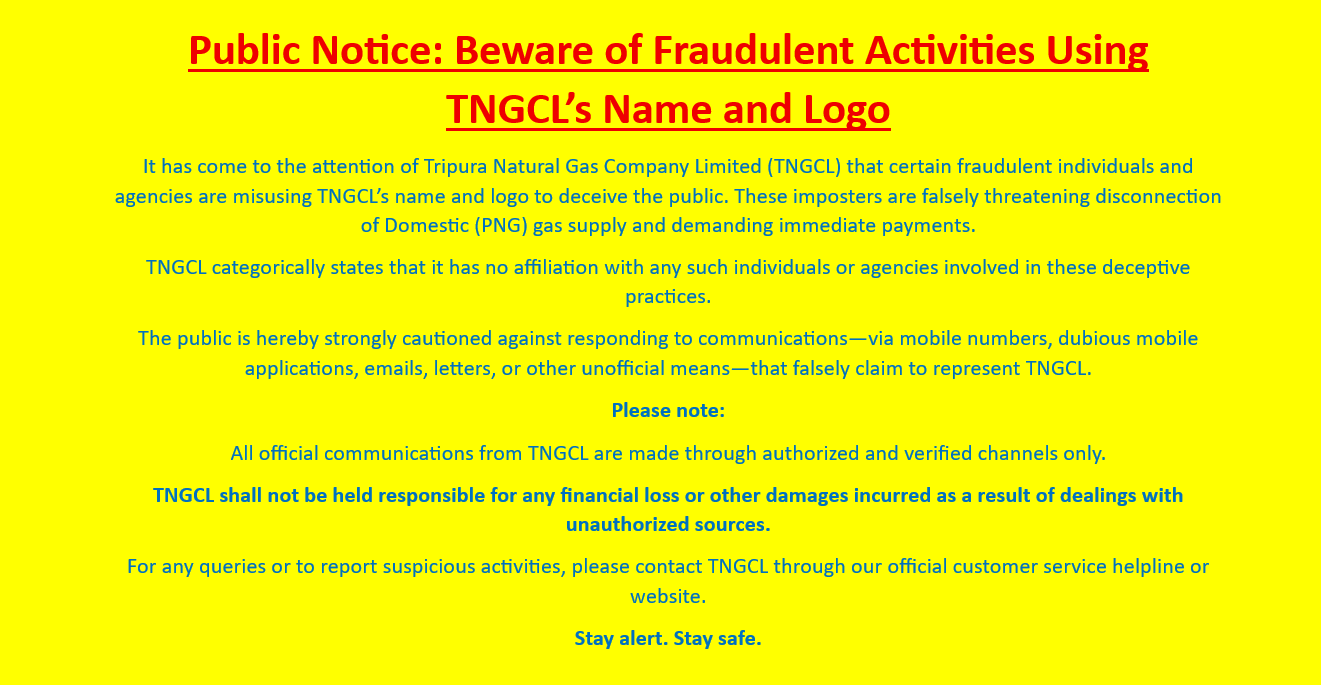FAQs
Yes, Absolutely. PNG is more advantageous than LPG. There are several reasons as to why PNG is more advantageous than LPG. Continuous and uninterrupted supply - PNG will be supplied to your house 24 hours a day, 7 days a week all through the year. You do not need to worry about storing PNG. Easily available - Once you get a connection, you will get it supplied to your house continuously through a pipeline. PNG is available as and when you want it. When you switch your gas stove on or turn on your geyser, it will instantaneously be available. Safety 24x7 - PNG is absolutely safe. The pressure of PNG is just 21 millibar. The pressure of PNG is 200 times lesser than gas supplied through cylinders. Natural gas is lighter than air, in case of any leakage; it will instantaneously mix with air and evaporate. But, LPG is heavier than air, and so in case of any leakage, it will settle down in the surroundings, leaving higher chances of fire from the cylinder. Hence, PNG is safer than LPG for your family. Safety valves and Pressure Regulators are installed on pipelines at certain intervals for safety purposes. These pipelines have control and inspection devices to regulate the flow in the pipeline. The pipelines used for connections have minimal holes due to which there is negligible chance of leakage of gas. Free from any Gas booking worries. Once you have your gas connection through PNG, you do not need to book you gas every month and wait for the cylinder. The gas is instantaneously available through pipelines 24 x 7. It is highly trustworthy - PNG is supplied and metered just like electricity. Since it is measured just like electricity through meters, there is absolutely zero chance of any tampering or the customer receiving lower weight like LPG supplied in cylinders. The reading for this natural gas received through pipelines is registered only for its actual consumption taken place. Clutter free and space free - The LPG cylinder occupies space in the kitchen. However, PNG is supplied through a half-inch pipeline which occupies almost close to negligible space when set up. Pay for what you use - In case of PNG, you have to pay as per the consumption only. This is unlike LPG cylinder where you cannot use all the gas as some quantity is always left in the cylinder.
1.Open windows and doors.
2.Close the appliance valve (Yellow knob just at the start of rubber tube).
3.Close the meter control valve (Knob near Meter).
4.Call our 24 hours emergency number 24012400 & 1800229944 immediately.
>Don'ts
1.Do not ignite the burner or any other items.
2.Do no switch on/ off any electrical switches / appliances in the house.
3.Do not operate mobile phone inside the house.
4.Do not attempt to repair the gas equipment or pipelines.
5.Do not repair gas lines/ equipment’s through unauthorized person.
Presently, we are charging Rs. 6500/- for a domestic PNG connection, comprising of : 1.Non-refundable charges of Rs.750/- towards application. 2.Interest Free refundable Security Deposit of Rs.5000/- for the connection and 3. Interest free refundable Security Deposit of Rs.750/- for gas consumption.
1.GI Pipe- 6 Meter
2.Appliance Valve- 1 No.
3.Isolation Valve- 1 No.
4.Meter- 1 No.
5.GI Pipe Fittings- 6 Mtr.
6.Meter Fitting- 1 No.
7.Rubber Hose Pipe- 1 No.
8.Conversion of Appliance (Stove)- 1 No. (2 Burners)
All items beyond the above list shall be charged extra.
Presently, we are charging Rs. 5,000/- for a domestic PNG connection as Security Deposit. Within this amount, we are providing the following items Free of Cost:
All spark-ignited engines can be converted to CNG, for which a specially designed conversion kit is required for the conversion process. The kit consists of a cylinder to be fixed in the boot of the car and other equipment’s to allow gas flow into the engine.

